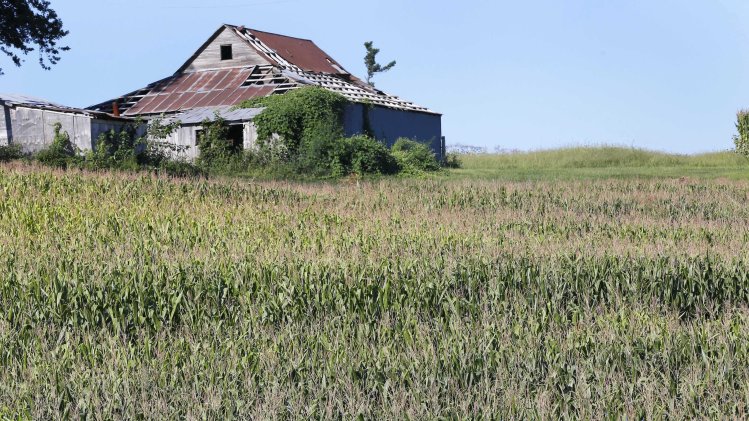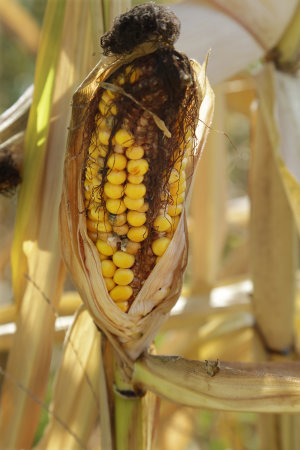Midwest hot, dry spell brings back drought worries


DAVID PITT August 29, 2013
Temperatures soared to records in recent days in parts of the region, reaching nearly 100 degrees in some areas. The heat wave struck many farm states — from the Dakotas to Wisconsin, down through Missouri — that have seen too little rain this growing season.
"It's about the worst case scenario we could have with these high temperatures and the lack of water with soil moisture declining," said Roger Elmore, an agronomy professor at Iowa State University.
A wet, cool spring delayed planting and slowed crop growth — but it also replenished soil moisture in many crop producing states, causing some of last year's widespread drought to retreat. The rain stopped in July in many of those states, however, and as the soil dried out, the heat set in and stressed corn and soybean crops.
The southeast Iowa city of Burlington, which is surrounded by corn fields, had its wettest spring on record at 19.23 inches of precipitation, nearly 8 inches above normal. Yet it's now on track to have its driest summer on record, with only 3.86 inches so far, 8.41 inches below normal.
Wayne Humphries farms about 1,000 acres about 45 miles north of Burlington at Columbus Junction. He grows corn and soybeans and raises hogs.
He said he delayed planting by about 30 days because of wet fields and now is watching the lower leaves of cornstalks turn brown from lack of moisture. He hasn't seen a measurable rain for 30 days.
Soybean plants are suffering too as seeds are developing in the pods.
"I
have solace in the fact that we did everything we could and we did it
to the best of our ability and now whatever happens, happens," he said.
"It's sort of a philosophical moment."
*******************************************************
Expanding U.S. Drought, Excessive Heat Hurt Iowa Corn, Soy Crops
By Jeff Wilson - Aug 29, 2013 7:12 PM CT
About 25 percent of Iowa had a moderate drought on Aug. 27, up from 7.9 percent a week earlier, while Illinois jumped to 20 percent from none, the U.S. Drought Monitor said yesterday in a report. Parts of Iowa received less than 25 percent of normal rain during the past 60 days, and much of Illinois got less than half of normal since June 30, data from the High Plains Regional Climate Center show.
After a wet May and June delayed planting, the U.S. Department of Agriculture cut its soybean-crop forecast by 4.8 percent on Aug. 12 and reduced its corn estimate for a third straight month. July was the 20th coldest in 119 years in Minnesota, Wisconsin, Michigan and Iowa, National Weather Service data show. Soybean futures are up 17 percent from an 18-month low on Aug. 7 on forecasts for dry weather, and corn rose 7.5 percent from a 35-month low on Aug. 13.
“The heat and drought are speeding crop development and reducing yield potential daily,” Roger Elmore, an agronomist at Iowa State University in Ames, said in a telephone interview. “We are skipping over critical stages of development that probably can’t recover even if temperatures cool and a little rain falls.”
While the crops need hot weather to develop, temperatures that approached 100 degrees Fahrenheit (38 Celsius) from Nebraska to Indiana in the past five days can cut corn yields at least 3 percent a day while reducing the number of seeds and seed weight in soybeans, Elmore said.
Yield Loss
Cool weather during the first 19 days of August masked the stress that the dry spell was causing to crops over most of the Midwest, Planalytics Inc. said in a report yesterday. The epicenter of the crop damage is in Iowa, based on the vegetative growth index that the forecaster constructs biweekly from satellite images.Read More Here
*******************************************************












No comments:
Post a Comment
Hello and thank you for visiting my blog. Please share your thoughts and leave a comment :)